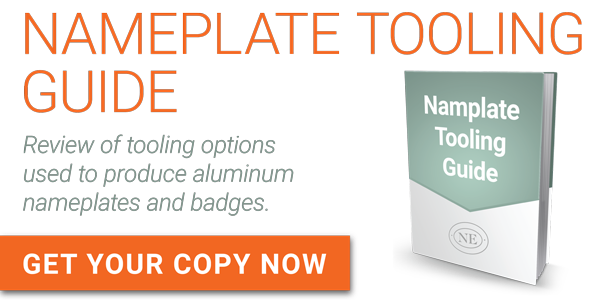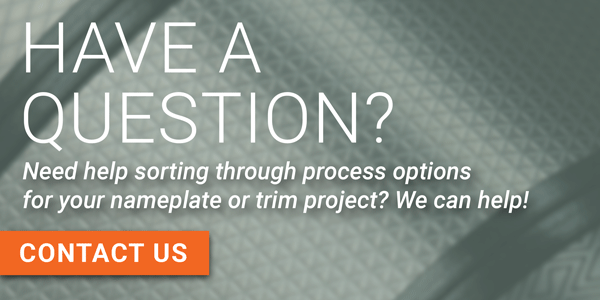Adding Depth to Your Nameplate with a Formed Edge
There has been a strong trend in adding depth to product branding with a formed edge or skirt. Nameplates are often designed with a skirt to add to the visual weight of the product branding. In some cases this is used as an alternative to a heavy cast badge. In others it is used to offer a finished edge to the nameplate hiding a raw aluminum edge.
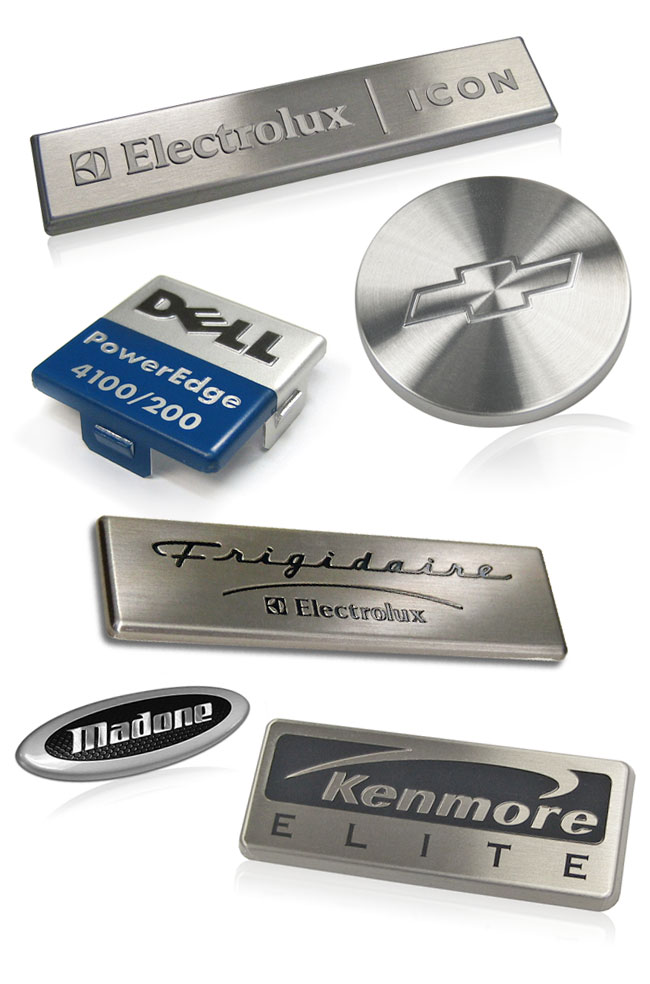
Options
- Depth
- Minimum skirt length of .040"
- Maximum skirt length of .200" (additional tooling is required for greater depth and requires more discussion and review to confirm feasibility on a case by case scenario)
Considerations
- Radius minimum of .040" - this can be impacted by these factors and are subject to review
- Finish or Decoration Process
- Material Thickness
- Test Requirements
- Additional tool operations are required
Attachment of Your Nameplate
There are several options for attaching a nameplate with a skirt. Our engineers can help you understand the benefits and limitations of each. The four most frequently used options are:
- Design a mating surface with the same contour
- Fill the back surface with a backplate
- Apply a foam adhesive
- Design tabs into the badge
Mating Surface with Same Contour
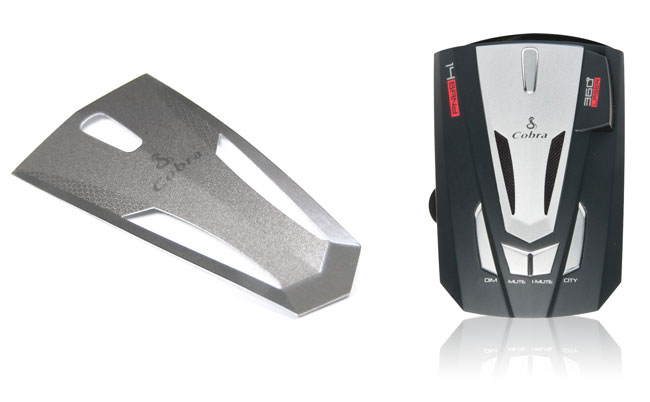
In this option the plastic component that the nameplate is attached to is molded to have the same shape as the back side of the nameplate. In other words, the aluminum nameplate is formed to the contour and shape of the mating product housing. A heat activate adhesive is commonly used in this application.
Nameplate Back Surface Filled with a Backplate
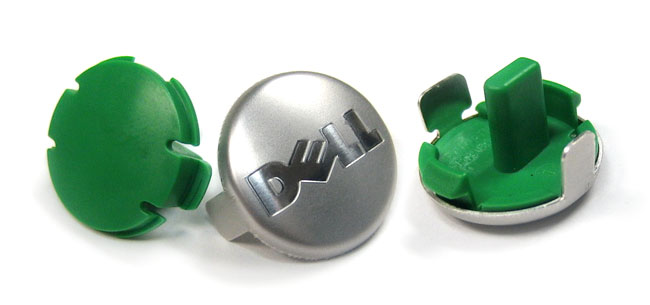
A metal or plastic backplate is used to fill the space created on the back of a nameplate with a skirt. Adhesive is applied to both sides of the backplate for adhesion to the nameplate and bonding to the product. This example shown here uses molded-in features in the backplate to further assist with attachment to the end product.
Foam Adhesive
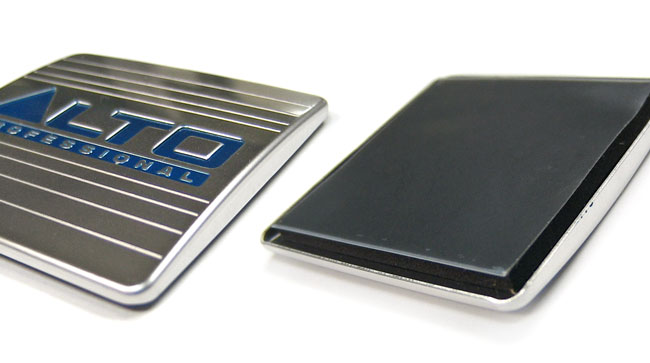
Foam adhesive is available in various thicknesses to be used as both a filler and a method of attachment for aluminum nameplates. This is a good choice when the nameplate is being applied to a rough surface. It can be more cost effective than using a backplate since it requires minimal or no investment in tooling.
Tabs
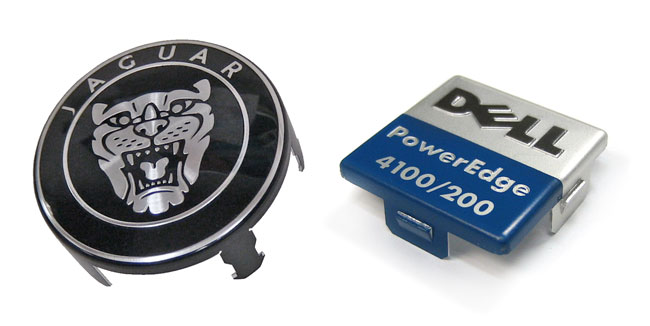
Obviously this option requires accommodations in the mating part. Tabs can be designed as a snap-fit or to be crimped. A badge with tabs can eliminate the need for adhesive. They also assist with precise alignment of the brand identification to the end product.
Editor’s note: This post was originally published in October 2011 and has been completely revamped and updated for accuracy and comprehensiveness.
Could your next badge take advantage of a formed over edge? Let's talk!
Subscribe to Nameplate Blog
- 2021 (1)
- 3D (4)
- Adhesives (11)
- Aluminum (129)
- Aluminum In-mold (9)
- Aluminum Trim (41)
- Anodize (4)
- Appliance (12)
- Appliqué (5)
- Archive (35)
- Artwork Submission (4)
- Assembly (6)
- Automotive (35)
- Backlit (5)
- Boats (6)
- Brass (8)
- Brushed Aluminum (19)
- Carbon Fiber (2)
- Classic (1)
- Coined (5)
- Color Development (25)
- Computers (13)
- Cosmetics (24)
- Custom Patterns (11)
- Customization (16)
- Customized Patterns on Aluminum (2)
- Debossing (13)
- Diamond Cut (22)
- Digital Printing (2)
- ebook (4)
- Electronics (23)
- Embossing (53)
- Etched (20)
- Exterior (9)
- FAQ (29)
- Faux Finish (1)
- Faux Finishes (7)
- Favorite Nameplate (20)
- Furniture (9)
- Gauges (5)
- Gloss (4)
- Hang Tag (1)
- IDSA (1)
- In-mold Decoration (5)
- Individual Letters (7)
- Inlay (1)
- Key Fob (1)
- Labels (10)
- Large Vehicle (4)
- Laser Etch (2)
- Lithography (3)
- Match Box Cover (6)
- Materials and Processes (118)
- Mechanical Finishes (51)
- Medical Equipment (10)
- Metallic (8)
- Motorcycle (11)
- Nameplate (175)
- Nameplate Examples (54)
- Nameplate Tools (7)
- Outdoor Equipment (4)
- Overlay (7)
- Packaging (15)
- Patina Finish (3)
- Plastic (1)
- Plastic Trim (3)
- Point of Purchase (8)
- Polycarbonate (10)
- Process Color (16)
- Promotional Products (38)
- Prototypes (2)
- Recreational Vehicles (6)
- Resources (11)
- Safety Labels (2)
- Selective Patterns (10)
- Sill Plate (6)
- Sports Equipment (9)
- Stainless Steel (17)
- stock dies (10)
- Surfaces (4)
- Sustainability (1)
- Technical (1)
- Telecommunications (9)
- Testing (3)
- Texture (15)
- Top 10 (9)
- Woodgrain (2)

